How to use aphid soap?
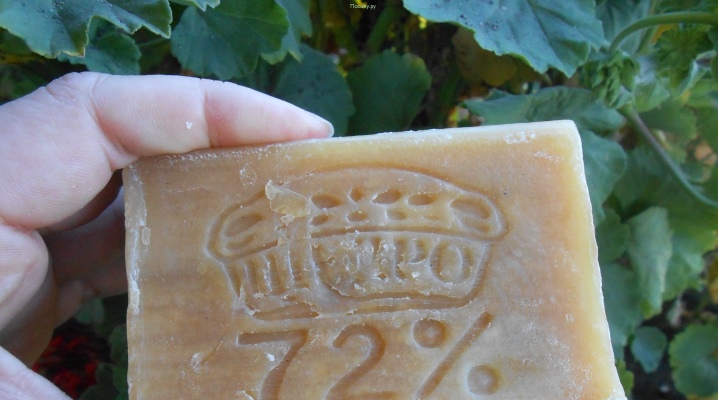
For a long time, soap has been actively used by gardeners to scare away and eliminate harmful insects. Solutions based on it have long been considered a folk remedy. With their help, you can scare off parasites from cultivated plants, which will help maintain the health of the plantings and ultimately enjoy a good harvest. Read about the properties of soap, how to use it in the garden, read the article.
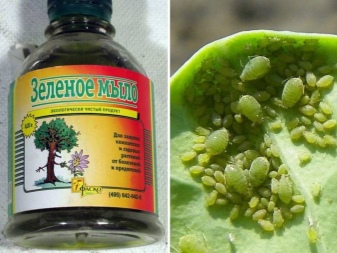
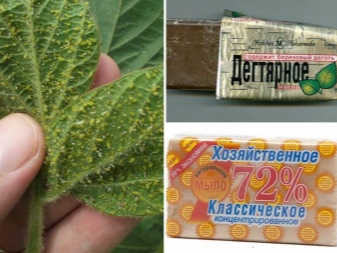
Action
Soap is an effective folk remedy that helps get rid of harmful aphids on many cultivated plants. This remedy is often used by gardeners to fight various parasites.
Laundry soap not only well removes pests from the site, but also can cure the plant from fungal diseases.
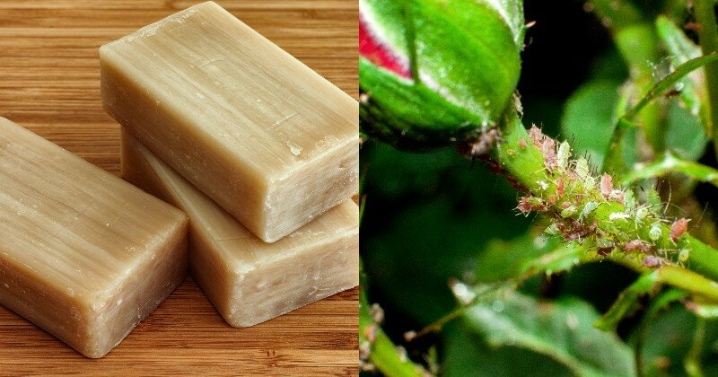
All this is due to the fact that the composition of this product contains an abundant amount of fatty acids, which have a lot of useful properties. For example, the caproic acid contained in soap alone is capable of killing about 90% of aphids, even in a low concentration mixture.
Besides, the use of laundry soap in solutions in combination with other ingredients helps to prolong the effect of the mixture. Due to the soap, the mixture adheres better to the sheet plate, which increases the duration of the solution. In addition, because of the soap, the insect itself adheres to the foliage, and another substance, in turn, contributes to the complete destruction of the parasite.
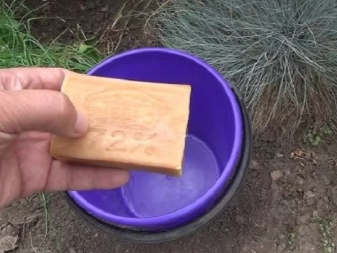
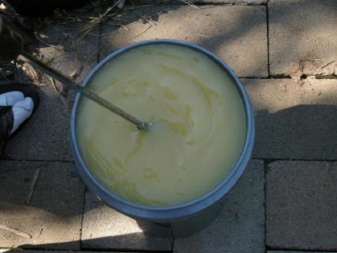
To combat the parasitic aphid, which sucks the plant juices of plantings, which subsequently causes them to dry out, you can also fight with other types of soap. For example, for solutions, you can use laundry soap, green or liquid soap. But cosmetic soap is unlikely to help you fight against aphids, as it has high disinfectant and antibacterial properties.
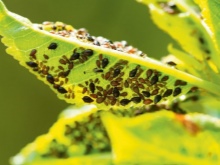

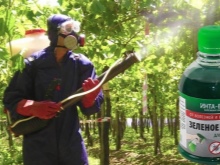
How to prepare a soapy solution?
Standard
The standard solution is easy to prepare. When preparing it, it is important to observe the dosage of substances so that the mixture is truly effective and completely destroys aphids.
So, the solution will require 300 grams of grated 75% soap. It is poured into a bucket and poured with 2 liters of heated water, after which it is stirred, waiting for the soap to dissolve.

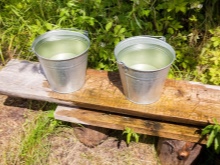
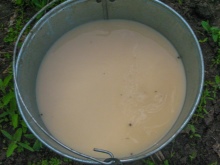
The concentrated mixture is diluted with 8 liters of chilled water, after which it is also thoroughly mixed. The solution should settle, after which it will be completely transparent without sediment. Further, the resulting mixture can be sprayed on the plants.
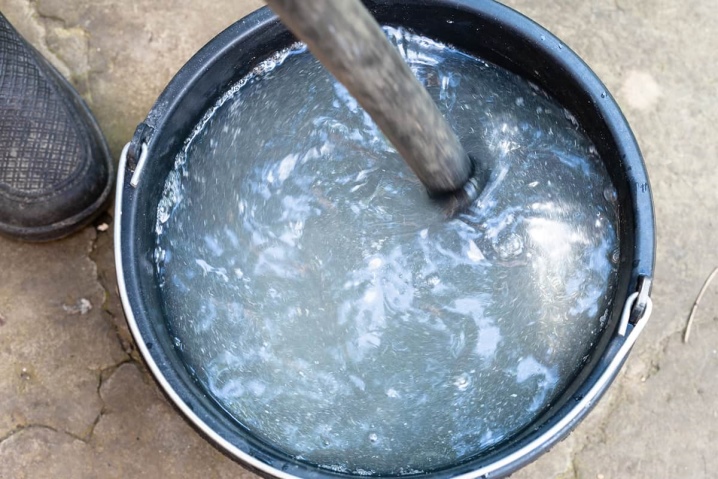
From liquid soap
A solution of liquid soap is prepared by analogy with the standard method, only the dosage of the substances changes. So, 125 milliliters of liquid soap will need to be diluted with 2 liters of warm water, and after 8 liters of cold water.
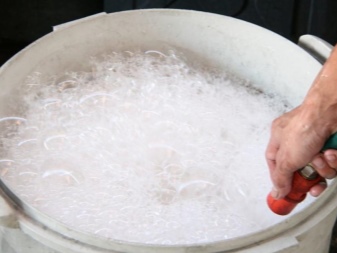
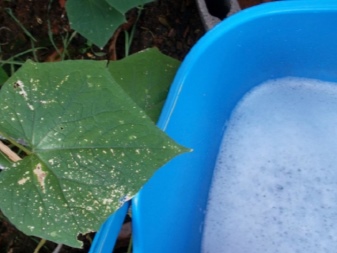
Additional recipes
Such recipes involve the use of any additional substances in combination with soap. These solutions are more effective and efficient in the fight against aphids.
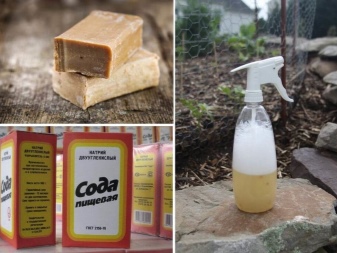
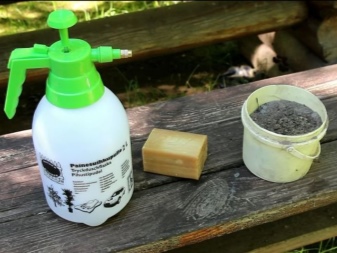
With ash
Wood ash is one of the most effective agents in the fight against various parasites. To prepare a mixture based on it, the ash must first be sieved through a strainer to remove large grains. In the end, you should get 300 grams of sifted wood ash... The product is poured into a metal bucket with 10 liters of water, after which the container is placed on the stove and boiled. After bringing the mixture to a boil, continue to cook for another half hour.At the end of cooking the solution, cool it a little and add 40 grams of grated laundry soap there.

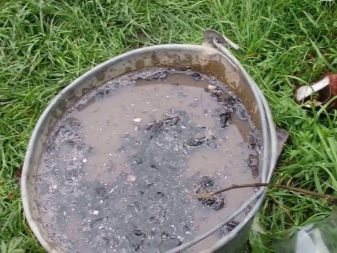
Note that it is not recommended to use this aphid control agent during the flowering period of plants.
Once on the flowers, the ash will settle, which will make them unsightly and lose their attractiveness to beneficial insects that pollinate plants. If the plant still needs to be processed, then it is best to use an ordinary soapy solution without any impurities.
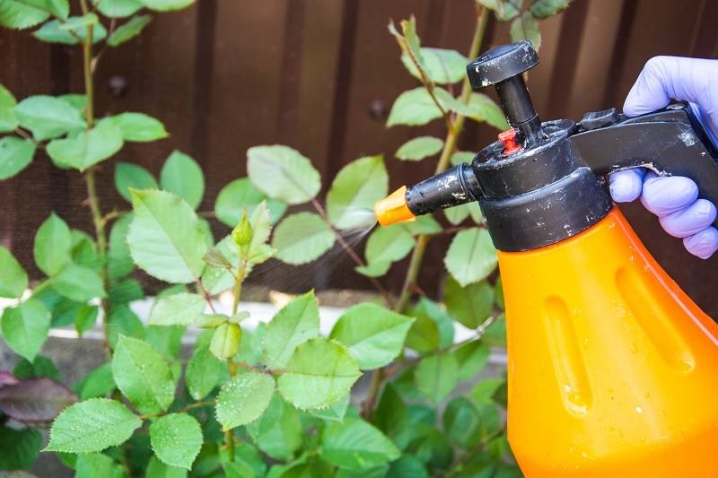
With soda
Soda solution in combination with soap is another effective means of fighting harmful aphids. To prepare the mixture, you will need a tablespoon of soda ash and ¼ a bar of laundry soap to rub. All this must be mixed and placed in a metal container, and then filled with a liter of hot water. The mixture must be stirred so that a homogeneous concentrated mass is obtained. Further, the solution must be additionally diluted with a bucket of chilled water, after which it can be used for spraying plantings.
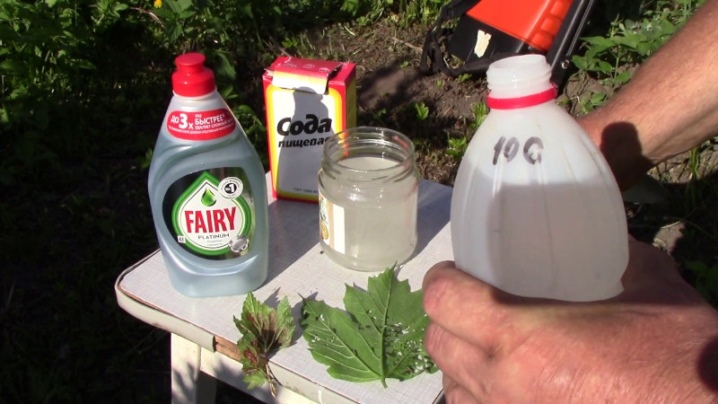
With tobacco
The high efficiency of tobacco in the fight against harmful insects is due to the fact that it has a strong aroma. Most parasites cannot tolerate strong odors on the spirit, and therefore they are often used to increase the effectiveness of solutions.
So, to prepare a mixture of tobacco, you need 200 grams of the main component in dry form. Both leaves and makhorka are suitable for the solution.
The tobacco is crushed into dust, after which it is poured into a bucket of water, 30-40 grams of shavings of laundry soap are added and, for greater efficiency, 1-2 pods of hot pepper.
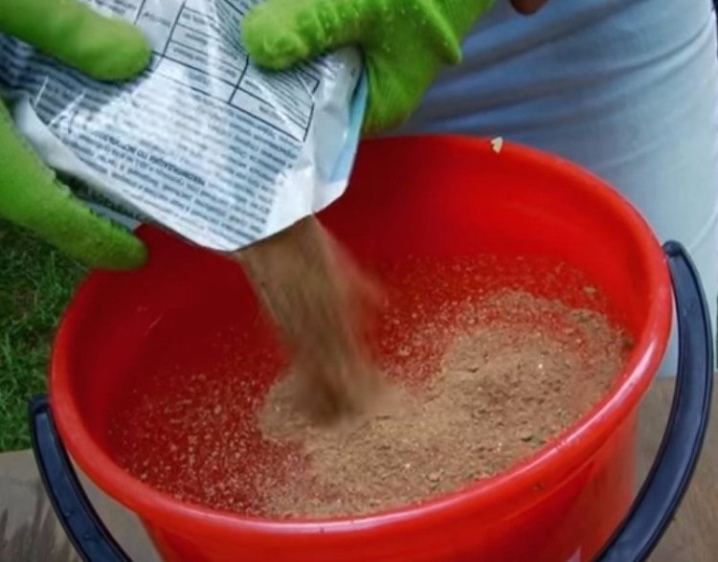
With potato or tomato tops
This recipe is also popular among summer residents. To prepare the solution, you will need 4 kilograms of tomato or potato tops, which must be finely chopped and poured into a metal bowl. Greens are poured with 10 liters of water, after which it is infused for about 6 hours. When the infusion is complete, the solution is placed on the stove and brought to a boil, then 50 grams of grated laundry soap is added to the mixture, all this is mixed, filtered and used for spraying.
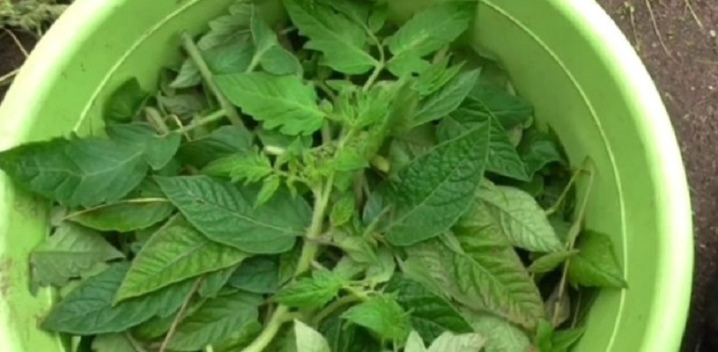
Coniferous extract
Coniferous extract, like tobacco, has a pungent odor. You can get this substance in the form of a salt or powder at the store.
So, to prepare a solution based on this product, you need to take 4 tablespoons of pine extract and dilute them in a bucket of water.
Next, about 30-40 grams of grated laundry soap is added to the container, all this is thoroughly mixed and infused for about half an hour. Further, the mixture is used to treat plants that have affected aphids.

Oil
The oil solution is prepared on the basis of ordinary vegetable oil. Thanks to this component in the composition, the solution adheres firmly to the leaf plate, does not fade in the sun and does not roll onto the ground, which increases the effectiveness of spraying.
Vegetable oil and shavings of laundry soap are used in equal proportions. So, 10 liters of water requires a glass of oil and the same amount of soap shavings. All components of the solution are well mixed and whipped so that the chips are completely dissolved. Further, such a mixture is used for spraying plantings and feeding the soil.
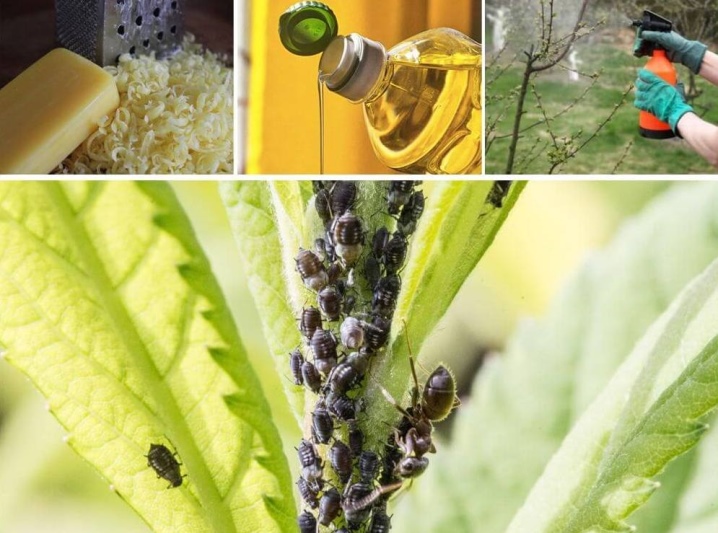
Spicy
For a spicy solution with a pungent aroma, you need cinnamon. Many parasites are afraid of its smell, and therefore it is the best component for preparing mixtures against them. So, you need a teaspoon of cinnamon, grated soap and a liter of water. All this is mixed and then used to spray the plants.
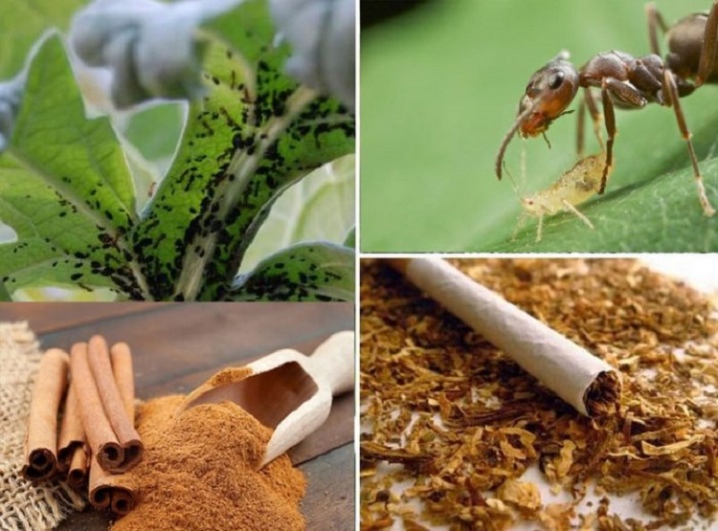
Applying green soap
Green soap is a special product that is a thick mixture of brown or greenish color. It contains a large amount of potassium salts and fatty acids. The use of such a tool can stop the development of pests, preventing them from feeding and reproducing. The main advantage of green soap is that it is absolutely harmless to the environment, while being highly effective.
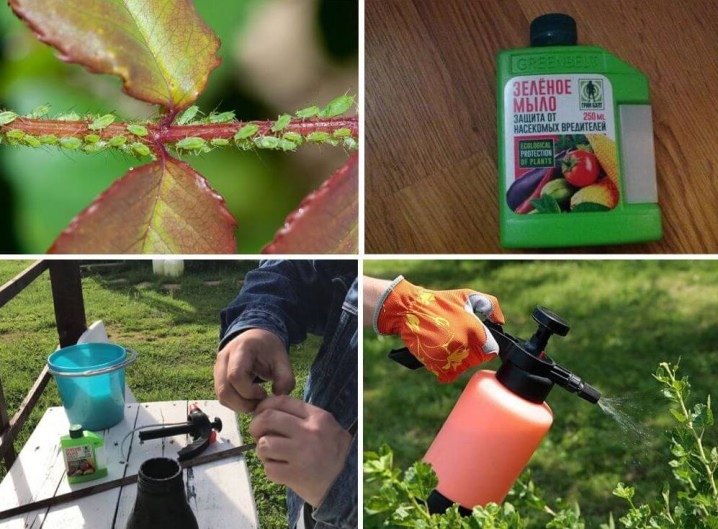
Most often, green soap is used for prophylaxis. It is not difficult to prepare a solution based on it.
It takes only 40 grams of the product, a liter of boiling water and 2 liters of kerosene. All this is mixed to such an extent that the thickness of the mixture resembles sour cream. Before using the solution, it must be shaken.
Such a remedy is used in the period of early spring before the formation of buds, as well as before winter. For prevention, plants can be sprayed with a solution with a concentration of 2-4% to protect them from spider mites and aphids.
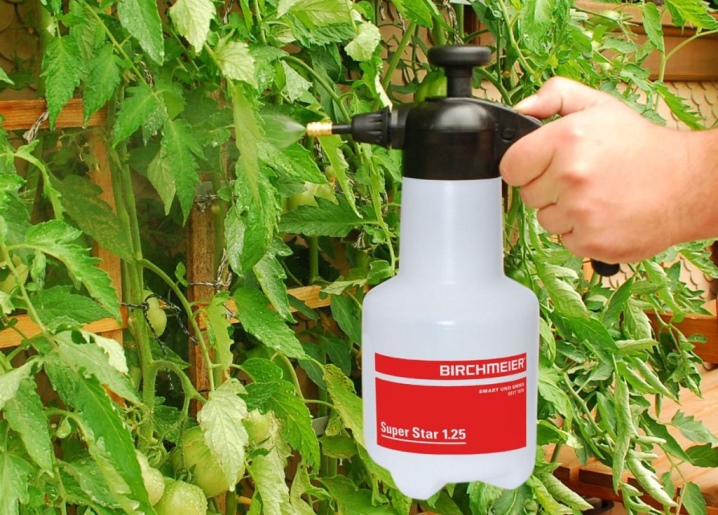
Such a solution is suitable for small plants such as shrubs; for treating trees, the solution must be diluted with water, increasing its amount by 2 times... If you plan to spray the plants during the peak season, when the foliage on the plants is still green, then this soap needs to be diluted with water up to 12 times.
At the same time, keep in mind that it is required to spray the plants in cloudy or in the evening, when the sun goes away. Otherwise, there is a risk of harming the plant, as it can get sunburn.
In addition, during processing, it is required to affect only the hive, without touching its root system.
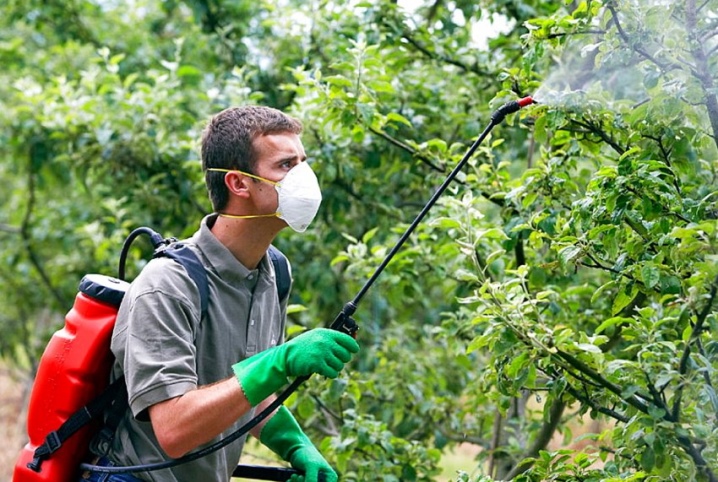
Please note that green soap is an insecticide, albeit not as strong as many chemicals. It must be used strictly according to the instructions and in compliance with safety precautions, while using a protective mask and rubber gloves. It can only be used to fight insects, it is not suitable for washing dishes or washing things.
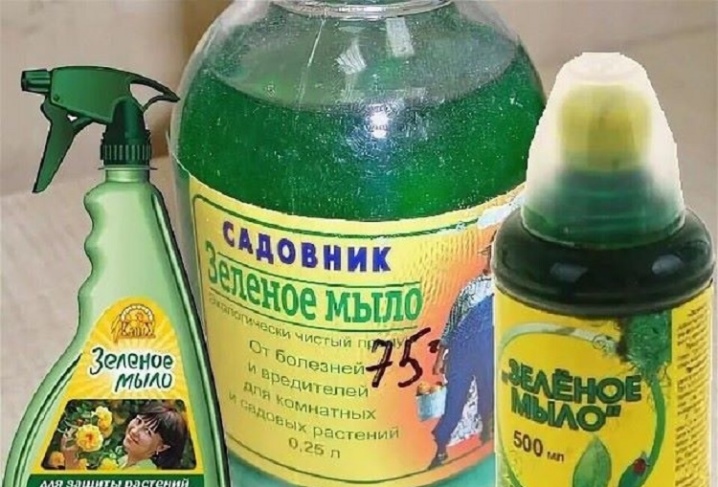
Processing features
The above solutions are suitable for a wide variety of plants, including trees, flowers, and small shrubs. However, it should be borne in mind that although soap is an effective tool for combating aphids and other pests, in neglected situations, when the parasites have already fully multiplied, it will be ineffective, and therefore you will have to resort to using other, more radical and effective means.
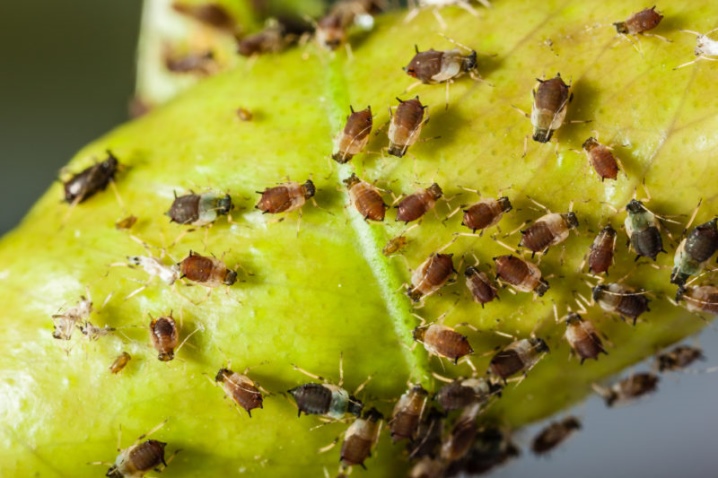
Plant processing should be carried out only in the evening or in cloudy weather.so that it does not get burned and get sick. At the same time, keep in mind that if it rains after treatment, the spraying will have to be repeated, since the product will not be able to affect the parasites and will quickly be washed off with water.
An equally important criterion for processing plants is its thoroughness. When spraying, take your time, take time not only to the upper side of the leaf plate, but also to the lower one, since this is where the main accumulation of aphids is observed. If you do not take the time to process the back of the leaflet, you should not expect a big effect.

In addition, before processing, it is worth doing elimination of anthills from the site... Ants are on friendly terms with aphids, as they feed on its sweet juice, which it secretes during its life. It is they who often bring the parasite to the site.













The comment was sent successfully.